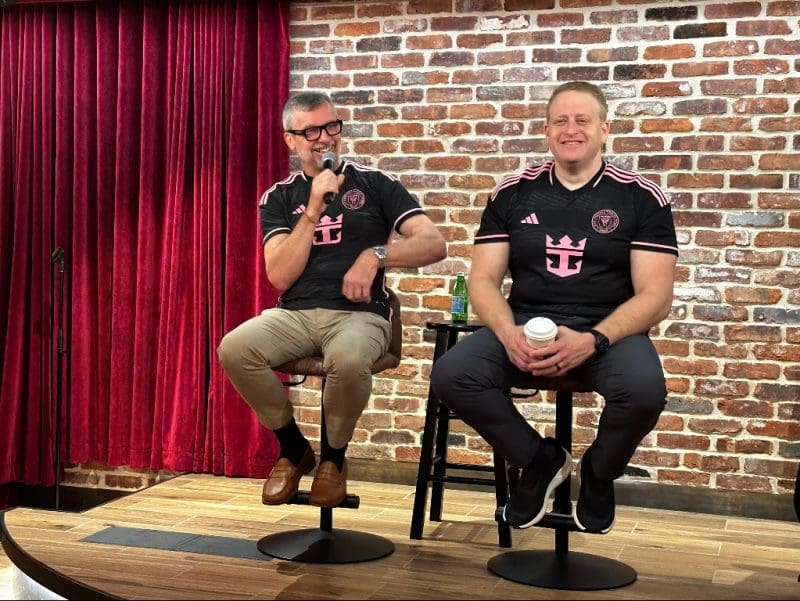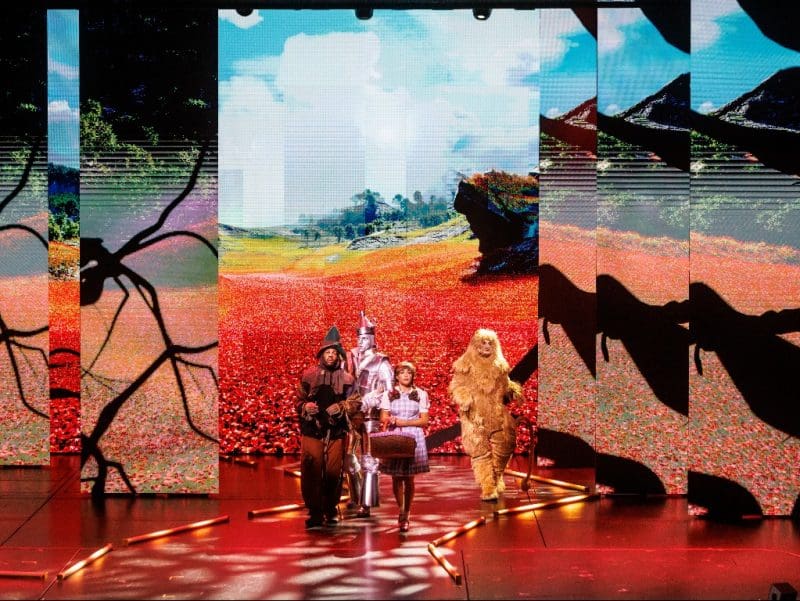Royal Caribbean is all about families
ANN RUPPENSTEIN
Even though the cost of goods has gone up, Vicki Freed, Royal Caribbean International’s senior vice president of sales, trade support and service, says the North American market is still placing a high value on vacations.
“They’re saying that it’s a priority and they’re finding the money to go on vacation and I think a lot of it is post-COVID,” she says. “During COVID so many people felt closed in and didn’t experience life and what we all learned was that life is unpredictable so there was all this pent up demand for travel. We’re seeing that consumers are still putting a higher value on that human connection.”
Looking at booking trends, she says this has resulted in larger groups of families and friends travelling together. “The trend we see is that people are going in clusters of groups,” she says. “They’re going in groups of 10 to 20 people to keep that human connection.”

Icon of the Seas is family-focussed
This new booking trend fits in perfectly to the offering on Icon of the Seas, which Royal Caribbean International president and CEO Michael Bayley says was designed with families in mind. For example Surfside, one of the eight neighbourhoods on the ship, caters to kids six and under, as well as bars and restaurant areas that appeal to parents and grandparents.
“This multi-generational focus, we’ve really paid even more attention to it on Icon of the Seas. If you think about Surfside, it’s absolutely unapologetically focussed on young families with children six and under,” Bayley says. “Eighty per cent of the rooms on Icon are capable of accommodating families. On a typical Oasis-class it’s around 25-30% so you can see it’s really a focus on the journey that we’ve been on and continue to be on.”

At double occupancy, the ship accommodates 5,610 passengers, but when rooms are fully loaded as most rooms have space for up to four passengers [and suites have even more capacity], that number increases to 7,600 passengers. With 2,350 crew, those figures jump to over 10,000 people.
“When we create these specific neighbourhoods, they draw a lot of people into them. One of the concerns people have is well if I sail on Icon there’s too many kids. But we’ve got the largest waterpark on the planet, at sea, on Icon,” he adds. “Literally, we know we can put 1,500 kids in a state of absolute euphoria through that waterpark in an hour. I mean that’s a lot of kids who are not only happy but not bugging you anywhere else on the ship.”

A matter of size
Although Icon of the Seas has garnered a lot of attention for being the largest cruise ship in the world, Royal Caribbean Group president and CEO Jason Liberty says building the ship was less about the size and more about the experiences they wanted to deliver onboard.
“A lot of people always kind of focus on the size. And for us, I think we really focus on the experience, and what is the experience we’re trying to deliver for our different segments and for the Royal Caribbean brand that’s obviously family, multi-generational — how do we build a platform to be able to do that?” he says.
As many ports around the world were designed to accommodate Oasis-class ships, which were at the time the largest in the world, Liberty says they also had to consider port constraints.

“I am absolutely not worried about supply outpacing demand,” he adds.
Sailing into the future
With seven pools, nine whirlpools, eight distinct neighbourhoods and 40+ restaurants, bars and lounges, the ship was designed with plenty of spaces and areas to spread out guests. To ease the flow of traffic throughout, one of the new innovations onboard is smart elevators that utilize the latest technology.
“You press the button, it tells you the elevator to go to. Everybody seems to find it very intuitive, simple and it’s incredibly efficient. It moves people far more comfortably and rapidly than the old fashioned elevator system,” Bayley says. “We do have the stats that it’s faster than the traditional elevator and those elevators have more capacity in terms of its ability to move people.”

Notably, although the ship is bigger than Oasis-class ships, Liberty says it’s 24% more fuel efficient than the previous class.
“We’re constantly evolving the footprint, obviously the ship is LNG, so just off the bat its carbon footprint is significantly less,” he adds. “We keep trying to introduce the technology to advance our goal of getting to a net zero ship by 2035. We’ve been working on fuel cell technology.”
Considering that Icon of the Seas was seven years in the making, its sustainability advances are considered a feat.
“For a ship that was designed seven, eight years ago to be 24% more efficient than ships that are operating today, that’s amazing,” adds Nick Rose, vice president — head of ESG for Royal Caribbean International.

















